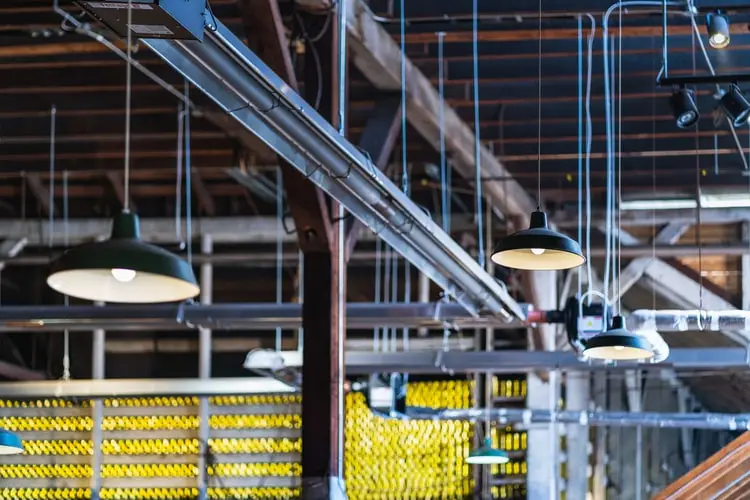In the ever-evolving landscape of modern industry, the importance of proper lighting cannot be overstated. As businesses strive to create safer, more efficient work environments, LED industrial lighting has emerged as a game-changing solution. This article explores the numerous advantages of LED lighting in industrial settings and why it has become the preferred choice for forward-thinking companies.
The Essence of Industrial Lighting
Adequate lighting is a critical component of any industrial workspace. It not only ensures the safety of employees but also plays a vital role in maintaining productivity and quality control. Poor lighting can lead to accidents, eye strain, and reduced output, ultimately impacting a company’s bottom line.
Shedding Light on Safety
One of the primary objectives of industrial lighting is to minimize the risk of accidents and injuries. Well-lit workspaces allow employees to clearly see potential hazards, reducing the likelihood of slips, trips, and falls. Moreover, proper illumination helps prevent errors in tasks that require precision, such as assembly line work or quality inspections.
Illuminating Efficiency
In addition to safety, industrial lighting directly influences employee productivity. Optimal lighting conditions help reduce eye strain and fatigue, enabling workers to maintain focus and alertness throughout their shifts. This is particularly crucial in industries that operate 24/7 or involve intricate, detail-oriented tasks.
The LED Revolution
Traditional industrial lighting solutions, such as fluorescent or high-intensity discharge (HID) lamps, have long been the norm. However, the advent of LED technology has revolutionized the lighting industry, offering a host of benefits that make it the superior choice for industrial applications.
Longevity and Durability
One of the most significant advantages of LED lighting is its exceptional lifespan. LED bulbs can last up to 50,000 hours or more, far outpacing their traditional counterparts. This longevity translates to reduced maintenance costs and minimal disruptions to operations due to frequent bulb replacements.
Furthermore, LED lights are incredibly durable, able to withstand vibrations, impacts, and extreme temperatures. This ruggedness makes them ideal for harsh industrial environments where reliability is paramount.
Energy Efficiency
LED lights are renowned for their energy efficiency, consuming significantly less power than traditional lighting options. By switching to LED, companies can realize substantial savings on their energy bills, often recouping the initial investment in a relatively short period.
Moreover, the lower energy consumption of LED lights contributes to a reduced carbon footprint, aligning with the growing emphasis on sustainability in modern industry.
 |
Enhanced Color Rendering
Color rendering refers to how accurately a light source portrays colors compared to natural daylight. LED lights excel in this regard, providing a more true-to-life color representation than many traditional industrial lighting solutions.
This enhanced color rendering is particularly beneficial in industries where color accuracy is critical, such as printing, textiles, or food processing. It allows workers to make more precise color judgments, ensuring consistent quality and reducing the risk of errors.
Instant-On and Flicker-Free
Unlike some traditional lighting options that require a warm-up period, LED lights achieve full brightness instantly upon being switched on. This instant-on capability is especially valuable in emergency situations or after power outages, ensuring that employees can quickly and safely resume their work.
Additionally, LED lights operate flicker-free, reducing eye strain and headaches that can result from the flickering of some fluorescent bulbs. This contributes to a more comfortable and productive work environment for employees.
Implementing LED Industrial Lighting
Making the switch to LED industrial lighting is a smart investment for any business looking to improve safety, productivity, and energy efficiency. However, it’s essential to work with experienced professionals who can assess your specific needs and recommend the most suitable LED solutions. Read more about the industrial Lighting Guide here.
Assessing Your Requirements
Every industrial setting has unique lighting requirements based on factors such as the type of work being performed, the layout of the facility, and any industry-specific regulations. A reputable LED lighting provider will take the time to understand your operations and tailor a lighting plan that optimizes safety and productivity.
Installation and Maintenance
Proper installation is crucial to ensuring the optimal performance and longevity of your LED industrial lighting system. Experienced technicians will handle the installation process, ensuring that the lights are correctly positioned and securely mounted.
While LED lights require minimal maintenance compared to traditional options, it’s still important to have a plan in place for regular cleaning and inspections. This proactive approach helps maintain the lights’ efficiency and identifies any potential issues before they become problematic.
Conclusion
The transition to LED industrial lighting represents a significant step forward in creating safer, more productive, and energy-efficient workplaces. By investing in this cutting-edge technology, businesses can reap the benefits of improved visibility, reduced accidents, enhanced employee well-being, and substantial cost savings. Read more about Make The Right Industrial Lighting Choices here.
As the industrial landscape continues to evolve, embracing LED lighting is not just a choice—it’s a necessity for companies that want to stay competitive and prioritize the safety and productivity of their workforce. So, if you haven’t already, now is the time to illuminate your future with LED industrial lighting.
[gravityform id=”1″ title=”true” description=”true”]
